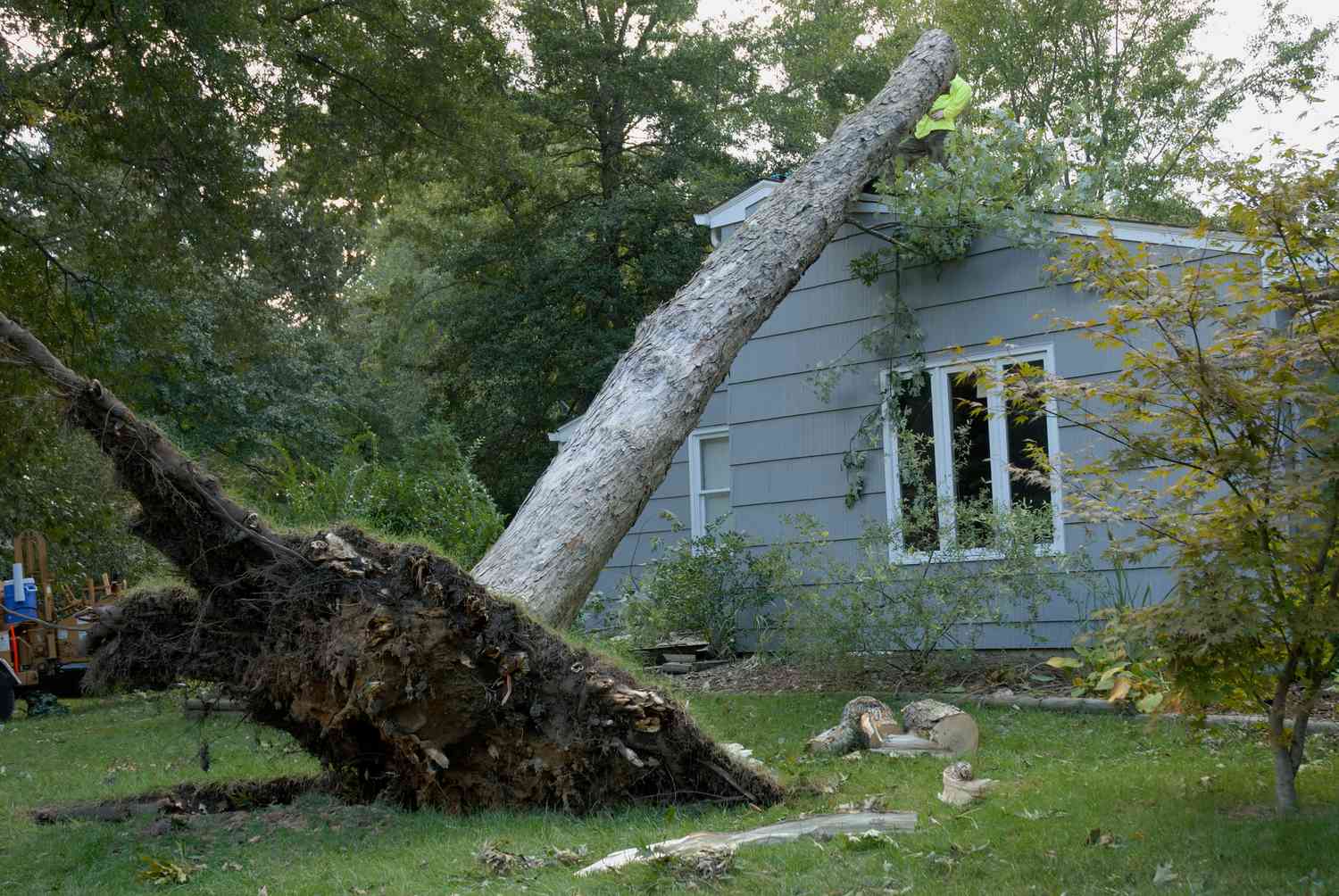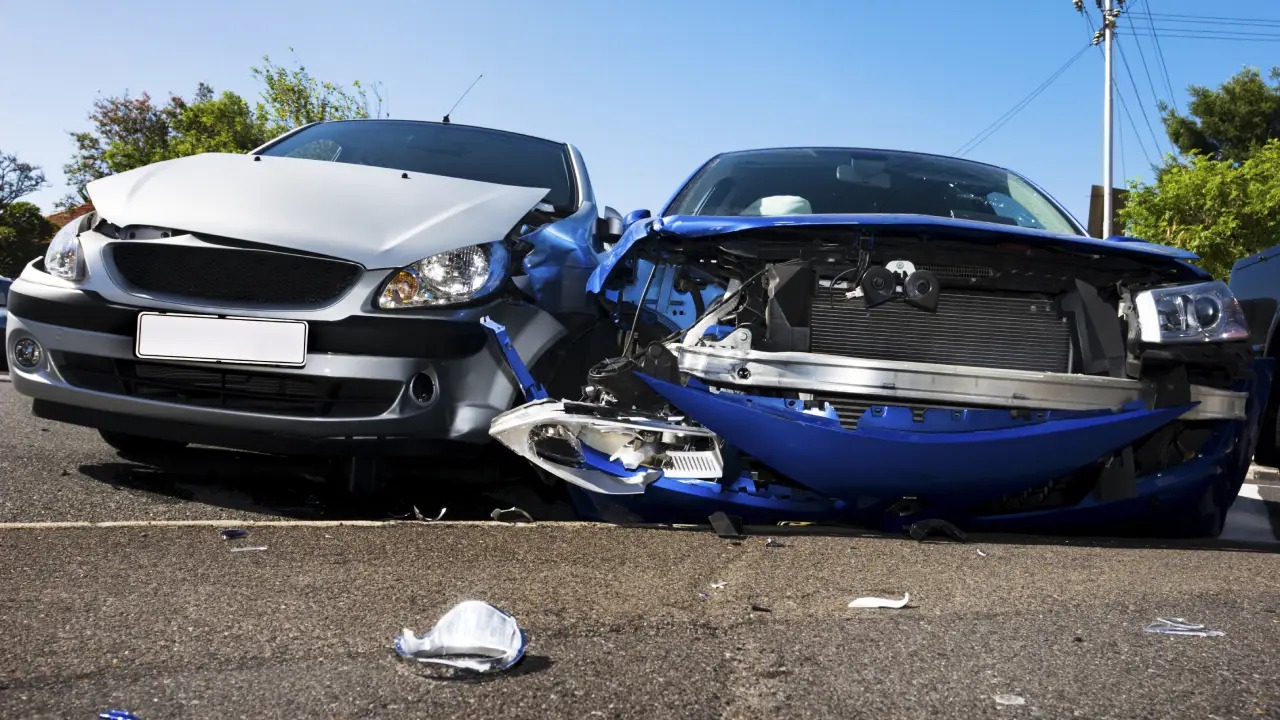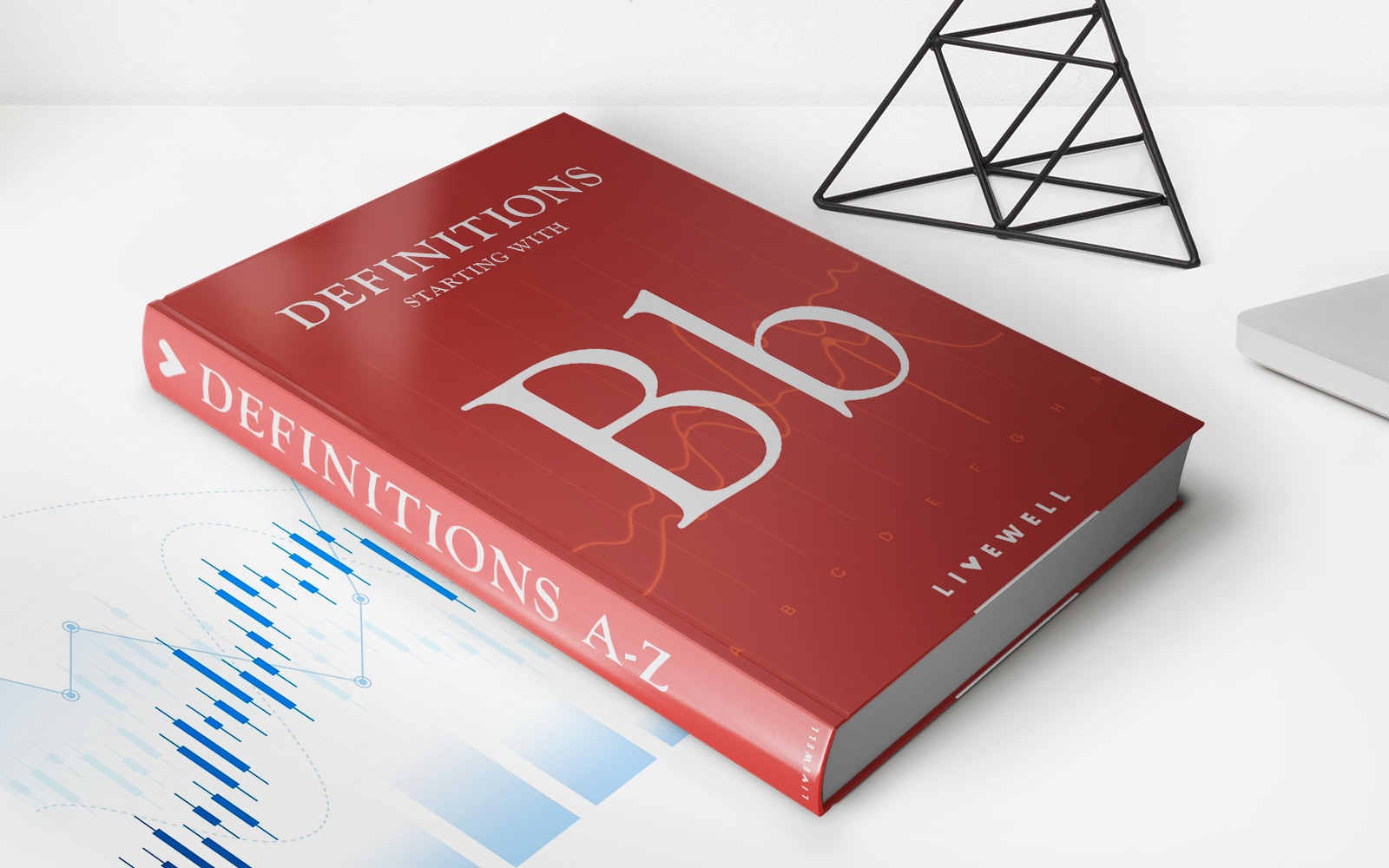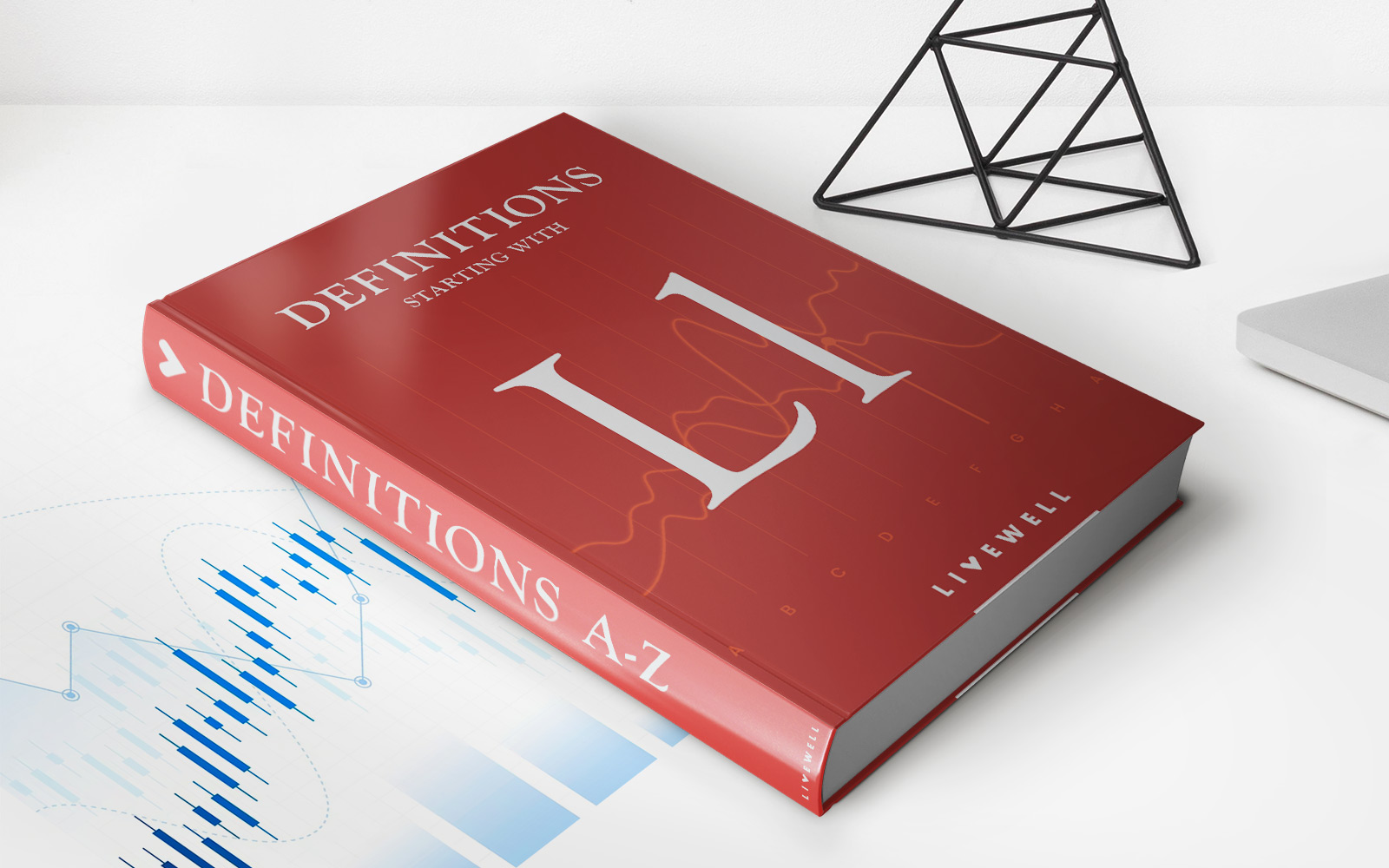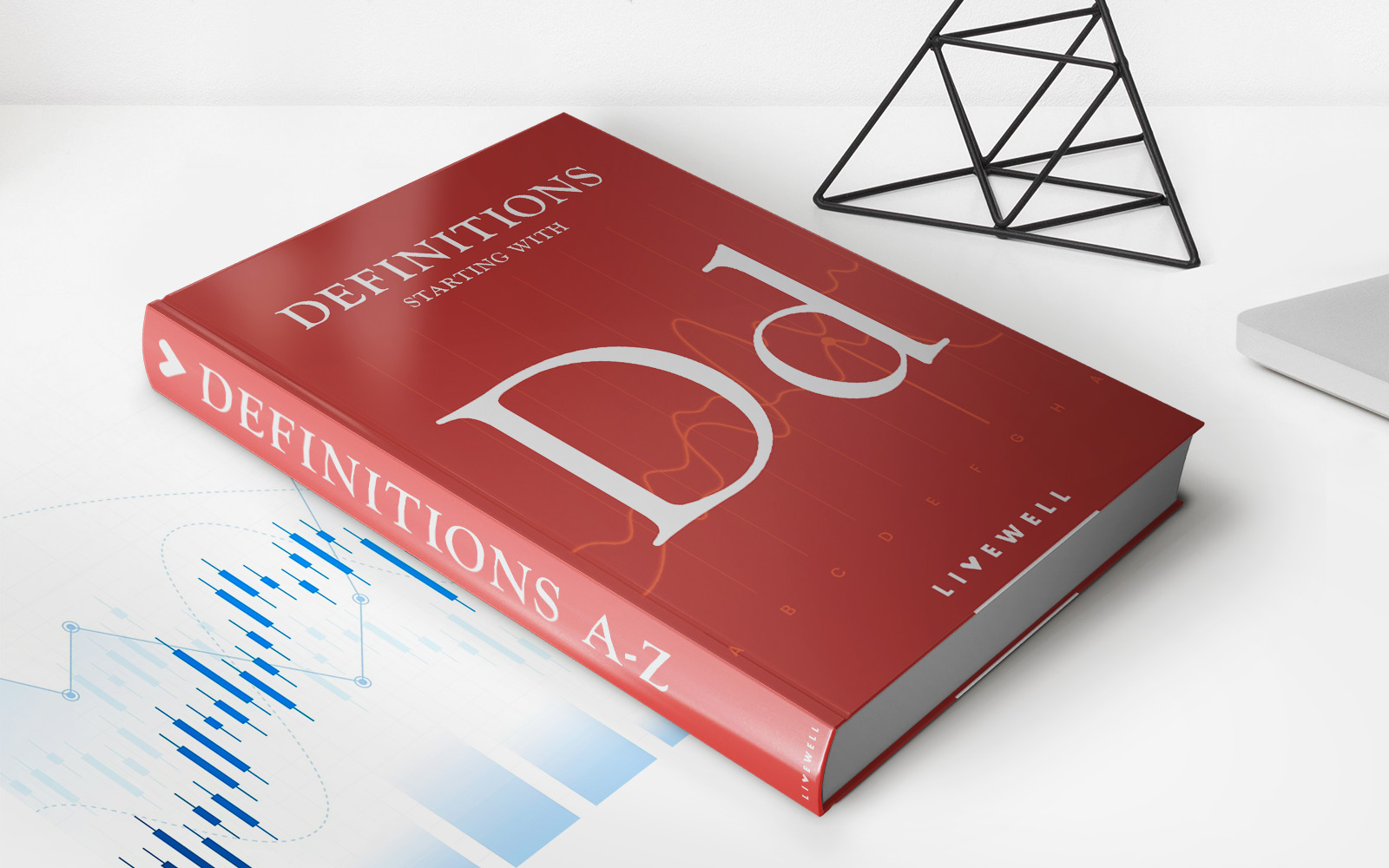

Finance
What Does Group Accident Insurance Cover
Modified: March 1, 2024
Group accident insurance provides financial protection for unexpected accidents, offering coverage for medical expenses, disability benefits, and death benefits. Safeguard your finances with this essential insurance.
(Many of the links in this article redirect to a specific reviewed product. Your purchase of these products through affiliate links helps to generate commission for LiveWell, at no extra cost. Learn more)
Table of Contents
- Introduction
- Understanding Group Accident Insurance
- Coverage for Accidental Death
- Coverage for Accidental Disabilities
- Coverage for Medical Expenses
- Coverage for Emergency Medical Evacuation
- Coverage for Accidental Dismemberment
- Coverage for Accidental Loss of Sight
- Coverage for Accidental Loss of Hearing
- Coverage for Accidental Loss of Limbs
- Coverage for Accidental Fractures
- Coverage for Accidental Burns
- Coverage for Accidental Death and Dismemberment (AD&D)
- Exclusions and Limitations
- How to Find the Right Group Accident Insurance
- Conclusion
Introduction
Group accident insurance is a type of coverage that provides financial protection to individuals in the event of an accident. While most people have health insurance to cover medical expenses, group accident insurance goes a step further by specifically focusing on accidents and the financial consequences that may arise from them.
Accidents can happen at any time, and their impact can be devastating. From unexpected medical bills to temporary or permanent disabilities, accidents can have long-lasting effects on individuals and their families. Group accident insurance helps alleviate some of the financial burden by offering coverage for a range of accident-related expenses.
Employers often offer group accident insurance as part of their benefits package to employees. This type of insurance can also be obtained through professional organizations, unions, or other membership groups. By enrolling in group accident insurance, individuals can have peace of mind knowing that they are protected in the event of an accident.
In this article, we will explore the coverage offered by group accident insurance and the benefits it provides. From accidental death and disabilities to medical expenses and emergency evacuation, understanding the scope of coverage will help individuals make informed decisions about their insurance needs.
It is important to note that group accident insurance is not a replacement for comprehensive health insurance. Instead, it complements existing coverage and focuses specifically on accidents. With that in mind, let’s delve into the various types of coverage offered by group accident insurance.
Understanding Group Accident Insurance
Group accident insurance is designed to provide financial protection to individuals in the event of accidents. It offers coverage for a wide range of accident-related expenses, such as accidental death, disabilities, medical expenses, emergency medical evacuation, accidental dismemberment, and more.
One of the key benefits of group accident insurance is that it provides coverage regardless of where the accident occurs. Whether it happens at work, at home, or while engaging in recreational activities, individuals are protected by their group accident insurance policy.
Group accident insurance typically operates on a reimbursement basis. This means that individuals will initially pay for the expenses out of pocket and then submit a claim to the insurance company for reimbursement. To ensure smooth claim processing, it is important to keep detailed records of medical bills, receipts, and any other relevant documentation as proof of expenses.
It’s worth noting that group accident insurance is generally less expensive than individual accident insurance policies. This is due to the group purchasing power, which allows for cost savings and more favorable premiums. Additionally, group accident insurance is often offered as a voluntary benefit, meaning individuals can choose to enroll and pay the premium themselves.
Another advantage of group accident insurance is that it typically guarantees coverage for all members of the group, regardless of pre-existing conditions or medical history. This makes it an attractive option for individuals who may have difficulty obtaining individual accident insurance due to health concerns.
The coverage provided by group accident insurance can vary depending on the policy and the insurance provider. It is important for individuals to carefully review the terms and conditions of the policy to understand the specific coverage and any limitations or exclusions that may apply.
Overall, group accident insurance is a valuable form of coverage that provides financial protection and peace of mind to individuals and their families in the event of an accident. It offers a wide range of coverage options and ensures that individuals are not burdened with the financial consequences of unexpected accidents.
Coverage for Accidental Death
One of the primary coverages offered by group accident insurance is coverage for accidental death. In the unfortunate event of a fatal accident, this coverage provides a lump sum payment to the designated beneficiary or the individual’s estate.
The amount of coverage for accidental death varies depending on the policy and the insured’s chosen coverage amount. Typically, the benefit is a multiple of the insured individual’s annual salary or a predetermined flat benefit amount.
Accidental death coverage may include a wide range of accidents such as car accidents, falls, workplace accidents, drowning, and more. It is important to carefully review the policy to understand the specific definitions and exclusions related to accidental death coverage.
In some cases, accidental death coverage may extend beyond traditional accidents to cover death resulting from acts of terrorism or the use of public transportation.
It is crucial to designate a beneficiary when enrolling in group accident insurance. The beneficiary is the person who will receive the accidental death benefit in the event of the insured’s death. It is advisable to review and update the beneficiary designation periodically to ensure that it aligns with the insured’s current wishes.
The payout from the accidental death coverage can provide financial support to the insured’s family or loved ones in the aftermath of a tragic accident. It can help cover funeral expenses, outstanding debts, and provide a financial safety net during a difficult time of adjustment.
While it may be uncomfortable to think about the possibility of accidental death, having this coverage in place can bring peace of mind, knowing that loved ones will be financially protected in the event of a devastating accident.
It is important to note that accidental death coverage is specifically designed for accidents and does not cover death resulting from natural causes or illnesses. For coverage in those situations, individuals should have a separate life insurance policy in place.
Overall, the coverage for accidental death provided by group accident insurance offers financial protection and support to the insured’s beneficiaries in the tragic event of an accident resulting in loss of life. It is a crucial aspect of group accident insurance and provides peace of mind to individuals and their loved ones.
Coverage for Accidental Disabilities
Group accident insurance not only provides coverage for accidental death but also offers protection in the case of accidental disabilities. Accidental disabilities refer to physical impairments, such as loss of limb, paralysis, or other injuries that result in a loss of bodily function or ability.
If an insured individual experiences an accidental disability, the insurance policy pays out a percentage of the coverage amount based on the severity of the disability. The specific terms and conditions of the policy will outline the disability categories and the corresponding benefit amounts.
The coverage for accidental disabilities aims to provide financial support to individuals who may experience a significant loss of income or require additional assistance and accommodations due to their disability.
Common types of accidental disabilities covered by group accident insurance include loss of limbs, loss of sight, loss of hearing, and paralysis. The benefit amount received is often a percentage of the total coverage, depending on the severity of the disability and the extent of the impact on the insured’s daily life and ability to work.
For instance, if an insured individual loses a limb, such as an arm or a leg, the insurance policy may provide a predetermined benefit amount specified in the policy. This benefit can help cover medical expenses related to prosthetic devices, rehabilitation services, and modifications to living arrangements to accommodate the disability.
Individuals who experience accidental disabilities may face additional costs, such as renovating their homes to accommodate mobility devices, hiring personal care assistants, or undergoing specialized medical treatments or therapies. The coverage provided by group accident insurance helps alleviate some of these financial burdens.
It is important to review the policy to understand the specific definitions and qualifications for accidental disabilities, as well as any waiting periods or limitations that may apply. Additionally, insurers may require documentation from medical professionals to verify the extent of the disability and determine the eligibility for benefit payments.
Accidental disabilities can have a significant impact on an individual’s life and financial well-being. Having the proper coverage in place through group accident insurance can provide the financial support and resources needed to adapt to these new circumstances.
It is worth mentioning that group accident insurance is not a substitute for disability insurance, which provides coverage for disabilities resulting from both accidents and illnesses. Individuals should consider having separate disability insurance if they want broader coverage that includes disability benefits for non-accidental causes as well.
In summary, coverage for accidental disabilities offered by group accident insurance provides financial protection and support in the event of permanent impairments resulting from accidents. It helps individuals cope with the financial challenges associated with accidental disabilities by providing benefits that can be used to cover medical expenses, assistive devices, and necessary lifestyle modifications.
Coverage for Medical Expenses
Group accident insurance includes coverage for medical expenses incurred as a result of an accident. This coverage aims to alleviate the financial burden of medical treatment, ranging from emergency room visits to ongoing care and rehabilitation.
When an insured individual is injured in an accident, the medical expenses coverage helps pay for the costs associated with their treatment. This can include hospital stays, surgical procedures, doctor visits, diagnostic tests, prescription medications, and physical therapy sessions, among other necessary medical services.
The specific coverage limits and reimbursement percentages vary depending on the policy and the chosen coverage options. Some policies may have a maximum payout amount per accident or per injury, while others may have a coinsurance percentage where the insured is responsible for a portion of the expenses.
It is important to carefully review the policy documentation to understand the specific coverage details, including any deductibles or copayments that may apply. By doing so, individuals can better estimate their out-of-pocket expenses and plan for any potential costs.
Group accident insurance medical coverage is designed to work alongside primary health insurance. If an individual already has health insurance, group accident insurance can be used to supplement the coverage by providing additional financial assistance for accident-related medical expenses.
This type of coverage is particularly valuable in situations where an accident results in high medical bills that may exceed the limits or coverage of the primary health insurance plan. Group accident insurance can help bridge the gap and ensure that individuals receive the necessary medical treatment without steep out-of-pocket expenses.
It is essential to understand that group accident insurance medical coverage is specifically for accidents and does not typically cover pre-existing conditions or illnesses. It is always advisable to review the policy documents and consult with an insurance representative to clarify any questions or concerns.
In summary, coverage for medical expenses provided by group accident insurance helps mitigate the financial impact of accidents by reimbursing individuals for the costs associated with the necessary medical treatment. It serves as a valuable supplement to primary health insurance and assists individuals in managing the potentially significant expenses resulting from accidents.
Coverage for Emergency Medical Evacuation
Group accident insurance often includes coverage for emergency medical evacuation, which provides financial protection and assistance in the event that an insured individual requires transportation to a medical facility for immediate or specialized care.
Medical emergencies can arise in various situations, such as accidents that occur in remote or inaccessible locations, natural disasters, or instances where local medical facilities are unable to provide adequate treatment. During these emergencies, having access to emergency medical evacuation can be a crucial lifeline.
Under the coverage for emergency medical evacuation, the insurance policy typically covers the expenses associated with transportation to the nearest medical facility that can provide the necessary care. This can include air ambulance services, ground ambulance services, or even transportation to a different country if the local facilities are not equipped to handle the medical situation.
Emergency medical evacuation coverage can also extend to repatriation services, which involve the transportation of the insured individual back to their home country or region for further medical treatment or recovery.
It is important to note that emergency medical evacuation coverage is typically activated when a treating physician or the insurance company’s medical team determines that transportation to a different facility is necessary for the individual’s well-being. This decision is made based on the medical necessity and the available resources and expertise at the current location.
Having coverage for emergency medical evacuation can provide individuals with peace of mind, knowing that they will have access to proper medical care regardless of their location. It can also help mitigate the significant costs associated with emergency transportation services, which can be exorbitant, especially when international travel is involved.
However, it is crucial to understand that emergency medical evacuation coverage has certain limitations and exclusions. For example, coverage may not be provided for pre-existing medical conditions or situations where individuals engage in high-risk activities intentionally.
It is always important to review the insurance policy to understand the specific terms and conditions related to emergency medical evacuation coverage. In addition, individuals should familiarize themselves with the procedure for activating the coverage, such as contacting the insurance company’s emergency assistance hotline.
In summary, coverage for emergency medical evacuation provided by group accident insurance offers financial protection and assistance when an insured individual requires immediate transportation to a medical facility for specialized care. It ensures that individuals receive the necessary treatment, regardless of their location, while also helping to alleviate the financial burden of emergency transportation expenses.
Coverage for Accidental Dismemberment
Group accident insurance often includes coverage for accidental dismemberment, offering financial protection in the event that an insured individual suffers the loss of a limb or body part as a result of an accident.
Accidental dismemberment coverage provides a specific benefit amount for the loss of certain body parts, such as arms, legs, hands, feet, fingers, or toes. The amount of coverage depends on the policy and is typically a predetermined percentage of the total coverage amount.
In the unfortunate event of accidental dismemberment, the insured individual receives the designated benefit amount to help cover medical expenses, prosthetic devices, rehabilitation, and any necessary modifications to their living arrangements or lifestyle.
It is important to carefully review the policy documentation to understand the specific definitions and qualifications for accidental dismemberment coverage. Some policies may require the loss of the entire limb or body part for the benefit to be paid, while others may have specific criteria based on medical guidelines.
Accidental dismemberment coverage is designed to provide financial assistance and support individuals who have experienced a sudden and severe physical loss. It aims to help individuals adapt to their new circumstances and cover the costs associated with medical care and necessary accommodations.
It’s essential to note that accidental dismemberment coverage is specific to accidents and does not typically cover the loss of limbs or body parts resulting from illnesses or pre-existing conditions. In those cases, separate disability insurance or other forms of coverage may be necessary.
Accidental dismemberment coverage can be especially valuable for individuals involved in high-risk professions or activities, such as construction workers, athletes, or individuals who engage in extreme sports. The financial protection provided by this coverage offers peace of mind and can grant individuals the means to recover and adjust to their new circumstances.
It’s recommended to review the policy details to understand any limitations, waiting periods, or exclusions that may apply to accidental dismemberment coverage. Insurers may require proper documentation from medical professionals to verify the extent of the dismemberment and determine the eligibility for benefit payments.
In summary, coverage for accidental dismemberment in group accident insurance provides financial protection and support to individuals who have suffered the loss of a limb or body part due to an accident. It helps mitigate the financial burdens associated with medical expenses and necessary lifestyle adjustments, allowing individuals to focus on healing and rebuilding their lives after such a traumatic event.
Coverage for Accidental Loss of Sight
Group accident insurance often includes coverage for accidental loss of sight, providing financial protection in the unfortunate event that an insured individual experiences a total or partial loss of vision due to an accident.
The coverage for accidental loss of sight offers a specific benefit amount to help individuals cope with the medical expenses, rehabilitation, and lifestyle adjustments that may be necessary after the loss of vision. This benefit can help cover costs related to medical treatments, visual aids, and adaptations to living arrangements.
The specific terms and conditions of the policy will outline the qualifications and criteria to receive the benefit for accidental loss of sight. Most policies require a permanent and irreversible loss of vision in one or both eyes as a result of a covered accident.
The benefit amount for accidental loss of sight depends on the policy and is typically predetermined as a percentage of the total coverage or as a fixed amount specified in the policy documentation. Individuals should carefully review the policy to understand how the benefit is determined and what expenses it covers.
Accidental loss of sight coverage can be particularly valuable as vision loss can have a significant impact on an individual’s life, affecting their ability to work, perform daily activities, and maintain independence. The financial assistance provided can help individuals seek necessary medical treatments, adapt to their new circumstances, and access support services.
It’s important to note that accidental loss of sight coverage in group accident insurance is typically limited to accidents and does not generally cover vision loss resulting from natural causes or pre-existing conditions. For such coverage, individuals may need to consider separate disability insurance or vision-specific insurance policies.
When it comes to filing a claim for accidental loss of sight, the policyholder should follow the insurance company’s guidelines and provide the necessary documentation, such as medical reports and tests, to support the claim. It is advisable to contact the insurance company’s claims department or customer service for specific instructions and assistance in the claims process.
Having coverage for accidental loss of sight in group accident insurance offers individuals a safety net during a challenging time. It not only helps bear the financial burdens associated with medical expenses and lifestyle adjustments but also provides emotional support by knowing that they have financial protection and resources to rebuild their lives.
In summary, coverage for accidental loss of sight provided by group accident insurance provides financial assistance to individuals who experience a total or partial loss of vision due to an accident. It helps them navigate the costs of medical treatments, vision aids, and necessary adaptations, allowing them to focus on their recovery and adjustment to their new visual circumstances.
Coverage for Accidental Loss of Hearing
Group accident insurance often includes coverage for accidental loss of hearing, providing financial protection in the event that an insured individual experiences a total or partial loss of hearing due to an accident.
The coverage for accidental loss of hearing offers a specific benefit amount to help individuals manage the medical costs, rehabilitation, and lifestyle adjustments that may be necessary after the loss of hearing. This benefit can be used to cover expenses related to medical treatments, hearing aids, assistive devices, and necessary accommodations.
Accidental loss of hearing coverage typically requires a permanent and irreversible loss of hearing in both ears or a complete loss of hearing in one ear as a result of a covered accident. The specific terms and conditions of the policy will outline the qualifications and criteria for receiving the benefit.
The benefit amount for accidental loss of hearing varies depending on the policy and is usually a predetermined percentage of the total coverage or a fixed amount specified in the policy documentation. To understand the coverage and benefit limits, individuals should review the policy and documentation thoroughly.
Accidental loss of hearing coverage can be extremely valuable as hearing loss can significantly impact an individual’s quality of life, communication abilities, and employment opportunities. The financial assistance provided can help individuals seek necessary medical treatments, obtain hearing aids or other assistive devices, and make necessary adjustments to their daily routines and environments.
It is important to note that accidental loss of hearing coverage in group accident insurance is generally limited to accidents and does not typically cover hearing loss resulting from natural causes, age-related hearing loss, or pre-existing conditions. Separate hearing-specific insurance or disability insurance might be necessary for broader coverage.
When filing a claim for accidental loss of hearing, policyholders should follow the insurance company’s guidelines and submit the required documentation, such as medical reports and tests, to support the claim. Contacting the insurance company’s claims department or customer service will provide further guidance on the claims process.
Having coverage for accidental loss of hearing in group accident insurance offers individuals peace of mind during a difficult time. It provides financial support and resources to navigate the challenges associated with hearing loss, allowing individuals to focus on their well-being and adjust to their new hearing circumstances.
In summary, coverage for accidental loss of hearing provided by group accident insurance helps individuals cope with the financial burden of medical expenses, hearing aids, and necessary lifestyle adjustments resulting from an accident-related loss of hearing. It offers financial protection and support, empowering individuals to navigate their new circumstances and improve their quality of life.
Coverage for Accidental Loss of Limbs
Group accident insurance often includes coverage for accidental loss of limbs, providing financial protection in the event that an insured individual experiences the complete amputation or permanent loss of a limb due to an accident.
The coverage for accidental loss of limbs offers a specific benefit amount to help individuals cope with the medical expenses, rehabilitation, and necessary adjustments to their daily lives after the loss of a limb. This benefit can be used to cover costs related to medical treatments, prosthetic devices, assistive devices, and necessary modifications to living arrangements.
The specific qualifications and criteria for the accidental loss of limbs coverage are outlined in the policy documentation. The loss of a limb may qualify for benefit payment depending on the severity and permanence of the amputation.
The benefit amount for accidental loss of limbs varies depending on the policy and is often predetermined as a percentage of the total coverage or a fixed amount specified in the policy. It is important for individuals to review the policy details to understand the coverage limits and benefit amounts.
Accidental loss of limbs coverage plays a crucial role in providing financial support to individuals who have experienced the traumatic loss of a limb. It helps cover the costs associated with medical treatments, prosthetic limbs, and rehabilitation services. Additionally, it provides individuals with the means to adapt to their new circumstances and regain their independence.
It is important to note that accidental loss of limbs coverage in group accident insurance is typically limited to accidents and does not generally cover the loss of limbs resulting from illness, disease, or pre-existing conditions. Separate disability insurance or specific coverage may be required for such circumstances.
When filing a claim for accidental loss of limbs, it is important to follow the insurance company’s guidelines and provide the necessary documentation, including medical reports and records that verify the amputation and the associated expenses. The insurance company’s claims department or customer service will be able to assist with the claims process and specific requirements.
Having coverage for accidental loss of limbs in group accident insurance offers individuals a safety net during a challenging time. It helps individuals access the necessary financial resources to cover medical expenses, regain mobility through prosthetic devices, and adapt to their new physical abilities.
In summary, coverage for accidental loss of limbs provided by group accident insurance offers financial support and resources to individuals who have experienced the traumatic loss of a limb due to an accident. It provides assistance in covering medical expenses, obtaining prosthetic limbs, and navigating the challenges associated with adjusting to life after the loss of a limb.
Coverage for Accidental Fractures
Group accident insurance often includes coverage for accidental fractures, providing financial protection in the event that an insured individual suffers a bone fracture due to an accident. Fractures can range from minor fractures, such as a broken finger or toe, to more severe fractures, such as a broken arm, leg, or ribs.
The coverage for accidental fractures helps individuals manage the medical expenses, treatment, and recovery process associated with bone fractures. It provides a specific benefit amount for each type of fracture, which can be used to cover costs such as doctor visits, diagnostic tests, x-rays, casting, and other necessary medical treatments.
Typically, the benefit amount for accidental fractures is pre-determined based on the severity and location of the fracture. For example, a more severe fracture, such as a hip or spinal fracture, may attract a higher benefit amount than a minor fracture. The policy documentation will specify the individual benefit amounts for different types of fractures.
Accidental fractures can result from a variety of accidents, including falls, sports injuries, or motor vehicle accidents. Having coverage for accidental fractures in place can provide individuals with financial support during the healing and recovery process, easing the burden of medical expenses and helping them focus on their recovery.
It is important to carefully review the policy to understand the specific definitions and qualifications for accidental fractures coverage. Some policies may have exclusions for certain types of fractures or may require medical documentation and proof of the accident to process the claim.
Accidental fracture coverage often has a waiting period before the benefits become effective. This waiting period is a specified period of time that must pass after the policy is active before the coverage for accidental fractures takes effect. The waiting period is designed to prevent individuals from enrolling in insurance after already having sustained a fracture.
When filing a claim for an accidental fracture, individuals should follow the insurance company’s guidelines and submit any required documentation, such as medical reports, x-rays, or other diagnostic tests, as evidence of the fracture and associated expenses. Contacting the insurance company’s claims department or customer service can provide further guidance on the claims process.
In summary, coverage for accidental fractures provided by group accident insurance offers financial support and resources to individuals who experience bone fractures resulting from accidents. It helps individuals manage the medical expenses associated with fractures, ensuring that they can receive the necessary treatments and focus on their recovery without significant financial burden.
Coverage for Accidental Burns
Group accident insurance often includes coverage for accidental burns, providing financial protection in the event that an insured individual suffers from a burn injury due to an accident. Burns can be caused by various sources, including fire, heat, chemicals, or electrical incidents.
The coverage for accidental burns helps individuals manage the medical expenses, treatment, and recovery process associated with burn injuries. It offers a specific benefit amount that can be used to cover costs such as hospital stays, surgeries, wound care, medications, specialized treatments, and necessary rehabilitation services.
The severity and extent of the burn injury generally determine the benefit amount provided by the policy. Major burns that require extensive medical care and long-term treatment may attract a higher benefit amount compared to minor burns. The policy documentation will outline the benefit amounts for different levels of burn injuries.
Accidental burns can have significant physical, emotional, and financial impacts on individuals and their families. Having coverage for accidental burns in place helps alleviate some of the financial burdens associated with treatment and recovery, allowing individuals to focus on healing and restoring their quality of life.
It is important to carefully review the policy to understand the specific definitions and qualifications for accidental burn coverage. Some policies may have exclusions for certain types of burns or may require medical documentation and proof of the accident to process the claim.
While accidental burns coverage typically extends to burns caused by accidents, it may not cover burns resulting from intentional self-harm or attempted suicide. Policies may also have specific limitations on coverage for burns caused by certain activities or circumstances. Individuals should closely review the policy to understand any exclusions or limitations related to accidental burn coverage.
When filing a claim for an accidental burn, individuals should follow the insurance company’s guidelines and submit any required documentation, such as medical reports, photos of the burn, or other diagnostic tests, to support the claim. Contacting the insurance company’s claims department or customer service can provide further guidance on the claims process.
In summary, coverage for accidental burns provided by group accident insurance offers financial support and resources to individuals who experience burn injuries resulting from accidents. It helps individuals manage the medical expenses and treatment associated with burns, providing them with financial relief during a challenging time and allowing them to focus on their recovery and rehabilitation.
Coverage for Accidental Death and Dismemberment (AD&D)
Group accident insurance often includes coverage for Accidental Death and Dismemberment (AD&D), providing financial protection in the event that an insured individual experiences a severe accident resulting in death or the loss of a limb, sight, or hearing.
AD&D coverage offers a specific benefit amount that is payable to the insured or their designated beneficiary in the event of accidental death or dismemberment. The benefit amount varies depending on the policy and is typically a percentage of the total coverage amount.
In the case of accidental death, the AD&D coverage pays out the designated benefit amount to the beneficiary or the insured’s estate. This benefit helps provide financial support to the insured’s loved ones during a challenging time, assisting with funeral expenses, outstanding debts, and providing a level of financial security for the future.
In the case of accidental dismemberment, the AD&D coverage pays out a portion of the benefit amount based on the severity of the loss. The specific benefit payout percentage will be outlined in the policy documentation. This benefit aids in covering medical expenses, rehabilitation, lifestyle adjustments, and the costs associated with prosthetic limbs or assistive devices.
AD&D coverage is typically an enhancement to the accidental death coverage provided by group accident insurance. It offers additional financial protection in cases where an accident results in dismemberment, whether partial or total.
It is crucial to review the policy documentation to understand the specific conditions and requirements for AD&D coverage. Some policies may have specific exclusions or limitations related to certain types of accidents or activities.
When enrolling in group accident insurance, individuals must carefully designate their beneficiaries for AD&D coverage. This ensures that the designated individuals receive the benefit payouts in the event of accidental death or dismemberment. It is advisable to regularly review and update beneficiary designations to reflect any changes in circumstances or preferences.
While having AD&D coverage provides an added layer of financial protection, it is essential to recognize that it is not a substitute for comprehensive life insurance or disability insurance. AD&D coverage focuses specifically on accidents and accidental deaths or dismemberments, complementing the broader coverage provided by other types of insurance policies.
In summary, the coverage for Accidental Death and Dismemberment (AD&D) offered by group accident insurance provides financial support to insured individuals or their beneficiaries in the event of accidental death or dismemberment. It offers a specific benefit amount to help cover funeral costs, outstanding debts, medical expenses, rehabilitation, and assistive devices, providing an additional layer of financial security in the face of unforeseen accidents.
Exclusions and Limitations
While group accident insurance offers valuable coverage for a wide range of accident-related expenses, it is important to understand that policies often have exclusions and limitations that determine the scope of coverage. These exclusions and limitations define certain circumstances or types of accidents that are not covered under the policy. It is crucial to review the policy documentation to fully comprehend the specific exclusions and limitations applicable to your coverage.
Some common exclusions in group accident insurance policies include:
- Pre-existing conditions: Group accident insurance typically does not cover medical treatment or expenses related to pre-existing conditions, which are health conditions that individuals already have prior to enrolling in the policy.
- Non-accidental injuries or self-inflicted harm: Intentional injuries or self-inflicted harm are generally not covered under group accident insurance policies. These exclusions aim to prevent individuals from intentionally causing harm to themselves or others to receive insurance benefits.
- War or acts of terrorism: Group accident insurance may exclude coverage for injuries or accidents that occur as a result of war, acts of terrorism, or civil unrest. These exclusions are in place due to the higher risks associated with such situations.
- Engaging in high-risk activities: Some policies may have exclusions for injuries sustained during high-risk activities such as skydiving, rock climbing, or other extreme sports. Engaging in these activities may nullify coverage or require additional coverage specific to those activities.
Additionally, group accident insurance may have certain limitations that can impact your coverage. These limitations can include:
- Benefit limits: Group accident insurance policies often have maximum benefit limits that determine the total amount that can be claimed for covered accidents or injuries. It is important to be aware of these limits and how they may impact your coverage.
- Waiting periods: Some policies may have waiting periods before certain coverages become effective. For example, there may be a waiting period before coverage for accidental dismemberment or certain medical treatments takes effect.
- Coordination with other insurance: Group accident insurance is often designed to work in coordination with other insurance plans. Certain coverages may be subject to coordination of benefits, meaning that the policy will only pay after other applicable insurance plans have paid their portion.
Understanding the exclusions and limitations of your group accident insurance policy is crucial in order to make informed decisions about your coverage. By carefully reviewing the policy documentation and seeking clarification from your insurance provider, you can ensure that you have a clear understanding of the situations or circumstances that may impact your coverage.
Keep in mind that group accident insurance is not intended to replace comprehensive health insurance or other forms of insurance. It serves as a supplemental coverage that focuses specifically on accidents. Individuals should consider obtaining other types of insurance to address their comprehensive healthcare needs and any specific coverage gaps that may exist.
In summary, exclusions and limitations are an integral part of group accident insurance policies, defining the circumstances or events that are not covered. Understanding these exclusions and limitations helps individuals have clear expectations regarding their coverage and make informed decisions about their insurance needs.
How to Find the Right Group Accident Insurance
Choosing the right group accident insurance policy requires careful consideration and evaluation. Here are some steps to help you find the right coverage for your needs:
- Evaluate your needs: Assess your personal situation and determine what coverage is most important to you. Consider factors such as your occupation, lifestyle, and any specific activities or risks that might require additional coverage.
- Review your existing coverage: If you already have health insurance or other insurance policies, review the coverage they provide for accidents. This will help you identify any gaps in coverage that may need to be filled by group accident insurance.
- Research available policies: Research different insurance providers and policies that offer group accident insurance. Pay attention to the benefits provided, coverage limits, exclusions, and limitations to ensure they align with your needs and expectations.
- Compare premiums: Compare the premiums of different policies to ensure they fit within your budget. Remember that a lower premium may come with higher deductibles or lower benefit amounts, so carefully evaluate the trade-offs.
- Read customer reviews: Look for customer reviews or seek referrals from colleagues, friends, or family members who have experience with group accident insurance. This can provide insights into the customer service, claims process, and overall satisfaction of different insurance providers.
- Seek expert advice: If you are unsure about certain policy details or need clarification, consider consulting with an insurance agent or broker who specializes in group accident insurance. They can provide personalized advice and help you understand the nuances of different policies.
- Ask questions: Reach out to the insurance providers you are considering and ask specific questions about coverage, exclusions, limitations, and claims processes. Make sure you have a clear understanding of the policy terms.
- Review the fine print: Carefully review the policy documents, paying close attention to the terms and conditions, exclusions, and limitations. Ensure that the policy provides the coverage you need and that there are no surprises down the road.
- Consider enrollment periods: Some group accident insurance policies may have specific enrollment periods, so be aware of any deadlines when you can join or make changes to your coverage.
- Seek employer or organizational options: If you have access to group accident insurance through your employer or professional organization, compare the available options and consider the benefits and cost-sharing options provided.
Finding the right group accident insurance requires evaluating your personal needs, researching available options, and understanding the policy details. By taking the time to carefully compare policies and ask the right questions, you can make an informed decision and select the coverage that best suits your circumstances.
Remember that group accident insurance is designed to supplement other insurance coverage and should not be considered a substitute for comprehensive health insurance or disability insurance. It is essential to assess your overall insurance needs and consider additional coverage to ensure comprehensive financial protection.
Conclusion
Group accident insurance is a valuable form of coverage that provides financial protection in the event of accidents. It offers coverage for accidental death, accidental disabilities, medical expenses, emergency medical evacuation, accidental dismemberment, burns, and more. By enrolling in group accident insurance, individuals can have peace of mind knowing they are protected against the financial consequences of unforeseen accidents.
Understanding the coverage provided by group accident insurance is essential in order to make informed decisions about insurance needs. Whether it is coverage for accidental death, disabilities, medical expenses, or other specific situations, individuals should carefully review the policy terms, exclusions, limitations, and benefit amounts to ensure they have the coverage that meets their unique circumstances.
While group accident insurance is a valuable form of coverage, it is important to remember that it is not a substitute for comprehensive health insurance or disability insurance. It serves as a supplement to existing coverage and focuses specifically on accidents. Individuals should consider their overall insurance needs and evaluate whether additional coverage is necessary to address any potential gaps in protection.
When searching for the right group accident insurance, it is crucial to evaluate personal needs, research available policies, compare premiums, read customer reviews, and seek expert advice if necessary. Understanding the policy details and asking relevant questions will help individuals select the policy that aligns with their needs and expectations.
In conclusion, group accident insurance provides valuable financial protection and peace of mind in the face of accidents. By understanding the coverage options, limitations, and exclusions, individuals can make informed decisions and select the policy that best suits their unique circumstances. With the right group accident insurance in place, individuals can focus on their well-being and face the future with greater confidence, knowing that they have financial support in the event of unforeseen accidents.






